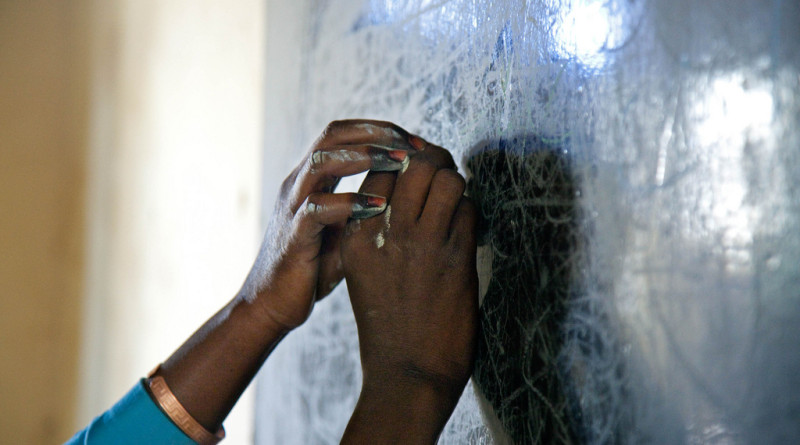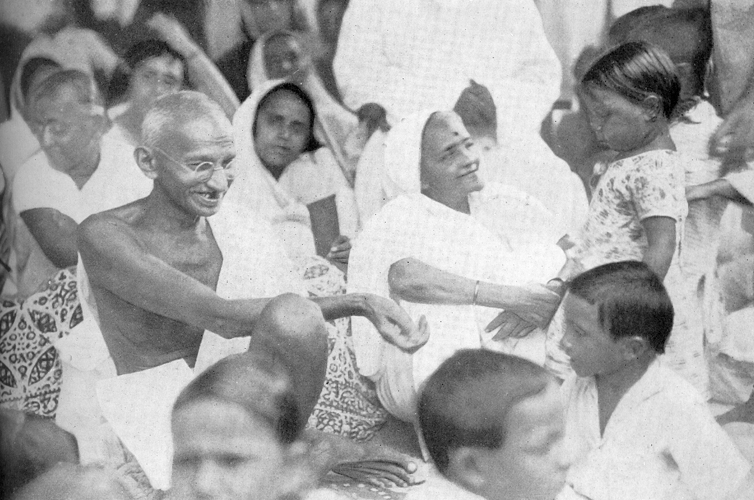The Gentle Man who Taught Infinity
The pedagogue is no less than a magician who transforms the life of the student in uncountable ways; here is a tribute to a very special teacher and his exceptional sense of artistic pedagogy by his own student who cannot forget him even twenty seven years after being taught by him.
Sheshagiri K M is an Education Specialist at UNICEF.
The American historian Henry Adams once said: “A teacher affects eternity; he can never tell where his influence stops.”My relationship with Mattur Venkatadri Channakeshava, the bespectacled gentleman who taught us math in school, is a lot like that.
27 years after I graduated from Baldwin Boys’ High school, Bangalore, I decided to write about him. I felt this deep urge to reconnect with him. I wonder why it took so long. After all, I must have passed by his house in Bangalore many times during all these years. I could have met him as many times as I wanted. I didn’t. I guess it is all about waiting for the right time to come.As Adams says, we end up picking up many things from our teachers in school, things that affect us in ways that we begin to understand only many years later. And what we pick up keeps visiting us time and again, in ways we cannot foresee. Why am I writing about Channa? The first sentiment that drives me is hope. Close on its heels is anger. I believe they are a potent combination.
I’m angry because our schools are letting down our children, day after day, year after year. Survey after survey by the government of the day, and those outside the government, show the abysmal depths we have managed to plumb. We cannot sink any further. The only way left is up. The crisis of learning is hidden, eating away at our vitals as a society. Imagine – a child who reaches the eighth grade carries many years of ‘learning deficits’ in all the subjects she tries to study in school. What she manages to learn, in effect, is only equal to what a third or fourth grader is expected to know! What a waste of her time! I’m not getting into a long-winded discussion on why this is happening. The undeniable fact is that it is staring us in the face, challenging us to respond.
I remain hopeful, nonetheless, because I can tell Channa’s story. There is much in its telling that could make math-learning enjoyable and open new vistas of beauty and discovery. Math is a drudgery for many, given the robotic and mechanical ways of teaching the subject that we have perfected over the years.
Stories like Channa’s, I hope, will help us to move out of these miserable depths. Out of the ‘math phobia’ that afflicts so many students. At least, they may then look forward to school. Channa’s story is that of an extraordinary teacher, his subject and his craft. I want to spread the word so that all of us – teachers, parents and those interested in education – can learn a thing or two from him. Stuff that we can do and enjoy. And see the difference. I believe this is a positive thing to do. My vantage point is that of an itinerant wanderer in education. I have been at it for 24 years, in different places, trying different things, hoping they will make a difference.
I was fortunate to learn high school mathematics from Channa. He didn’t make me a rank holder or a gold medallist in the subject. No, he didn’t. I was just an average student of the subject who very nearly failed in it in the ninth grade. He will vouch for this. But he made me love the subject. That is what he wanted from all of us in a school that was ultra-conventional and prided itself on exam results, a school where corporal punishment was the norm. The first thing Channa did was make us enquire and think. He gently nudged and pushed us to figure things out on our own, always. Second, his teaching was based on first principles… always. You never got a sense that he was ad hoc. He taught you to see a pattern in the madness. Third, he taught us mathematics because he wanted us to pursue truth and beauty, not just get good examination grades. Yes, you read me right. Never mind if none of us became mathematicians. For me, he made math fascinating. Finally, Channa was a master storyteller who loved his craft. Which is why I remember minor details of his teaching even after all these many years.
Channa is the eternal student of mathematics who carries within his being a deep understanding of its structure, its mysteries and its paradoxes, perspectives which were sown in the by-lanes of a village called Mattur in Shimoga district of Karnataka, on the banks of the river Tunga. These he happily shared with us. So we stood on his shoulders and looked beyond, enjoying the mathematical landscapes that were unravelled and made visible. Beautiful, often startling, landscapes that I hope to share with you.
It was the year 1982. The monsoon had set in and I had just entered Class 8. It was Channakeshava’s first class with us in June that year and it had very little to do with our syllabus and textbook. He could have so easily started off with the first chapter in the textbook and we would have plodded on as usual. Instead, he did something very different, which no other teacher had ever done before in any of my classes. He began by showing us ‘beauty’ in mathematics. I say this in hindsight because it wasn’t obvious then. I’d never seen beauty in mathematics until then even in my wildest dreams. What happened in the class that day was quite astonishing even as it was fun. After we had multiplied the numbers on the left, this was what he wrote out very neatly on the blackboard.
142857 x 1 = 142857
142857 x 2 = 285714
142857 x 3 = 428571
142857 x 4 = 571428
142857 x 5 = 714285
142857 x 6 = 857142
I’m sure you are beginning to see something very interesting going on here. There is a ‘cyclic permutation’ of the digits of the number 142857 on the right hand side – sometimes, one digit gets shifted, sometimes two, sometimes even three! How could that be? ‘Mathematics is full of such curiosities,’ said Channa. ‘It is our job to find out the underlying patterns…’ Indeed, one way of looking at mathematics is to see it as the study of patterns. This example, along with the story of that great mathematician, Gauss, who, when he was all of 10 years of age, calculated the value of the sum 1+2+3+4+…+98+99+100 in the most ingenious way possible, completely disrupted my existing notions of mathematics and its learning.
There was no looking back after that. Over the next three years, Channa took us on a roller-coaster ride into the world of mathematics. I say this deliberately. Beyond the syllabus and our sterile textbooks, he showed us what mathematics is really all about – from the cyclic numbers I have just described to the story of that great Greek Geometer, Euclid and from Gauss to our own Bhāskarāchārya, from Georg Cantor to Leonhard Euler and the Seven Bridges of Königsberg, and from the Barber’s Paradox of Bertrand Russell to the Four Colour Problem and from Fermat’s last theorem to the paradoxes of infinity, there was never a dull moment.
These intriguing problems, patterns, paradoxes and mysteries are the heart of mathematics, Channa said. We students needed to understand them to truly appreciate and love the subject. The best part is how they are intimately linked to what we study in school. The saddest part is that they are not included in our syllabus. Our curriculum and syllabus makers have deprived us of the very best parts of mathematics, year after year. As the mathematician Ian Stewart reminds us:
The maths you did at school is not all of it. Better still: the maths you didn’t do at school is interesting. In fact, a lot of it is fun.
Thanks to Channa, mathematics became a very human story for us, filled with meaning and a character of its own. He demonstrated how even the most complex mathematical ideas could be made simple for kids like us. I wanted to know more and more. What if I was just a so-called average math guy? 30 years after that first encounter with Channa, I first wrote an article on him. As someone who had spent several years in education, trying to make schools better, I had realized that there were so few teacher stories. As I began writing, the stuff that Channa did all came back to me – one thing at a time. I suppose this is what great teaching does to you. It never gets out of your system. The article somehow made its way into Voices, the online journal of the National Council for Teacher Education. Then there was a turning point when a suggestion was made that I could make the article more interactive and conversational. That is how I came to write a book with Channa as the protagonist.
The teacher, his craft and his subject – they are inseparable. These three elements form the core of the book. They are also built into its title. I use the word ‘infinity’ in a metaphorical sense to show that the study of mathematics opens us to infinite imagination and possibility, enabling us to develop insights into the nature of the infinite. The three elements that make up this book jostle with each other in almost every chapter. The book is for those who were hassled by mathematics as students and now as parents – trying to make sense of all the math mumbo-jumbo thrown at them. Then come the stressed teachers who try hard to make their students understand math and get good grades. And, finally, comes just about anyone who is interested in the education of children. I’m sure that’s a huge number of people. For reading the book, there is no examination to be passed.
You are warmly invited to leap into the fray. What else could be more important?
Giri’s book, The gentle man who taught infinity, will be published by Eklavya in February 2017
This article is published in The New Leam, MARCH 2017 Issue( Vol .3 No.22 – 23) and available in print version. To buy contact us or write at thenewleam@gmail.com
The New Leam has no external source of funding. For retaining its uniqueness, its high quality, its distinctive philosophy we wish to reduce the degree of dependence on corporate funding. We believe that if individuals like you come forward and SUPPORT THIS ENDEAVOR can make the magazine self-reliant in a very innovative way.










